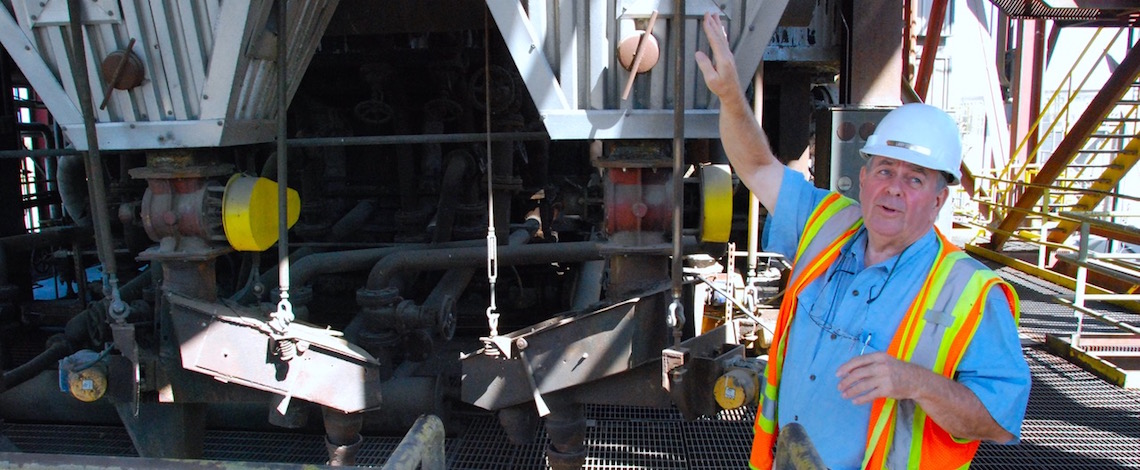
Larry Osborne, the general manager of Dinuba Energy, stands on a catwalk or the six-story biomass electrical plant that used to burn waste wood from landfills and agriculture and generate electricity. The plan has been closed just under three years. Photo by David Castellon
Written by
Three years ago, having a conversation inside the six-story Dinuba Energy electrical plant would have been near impossible. Words would…







